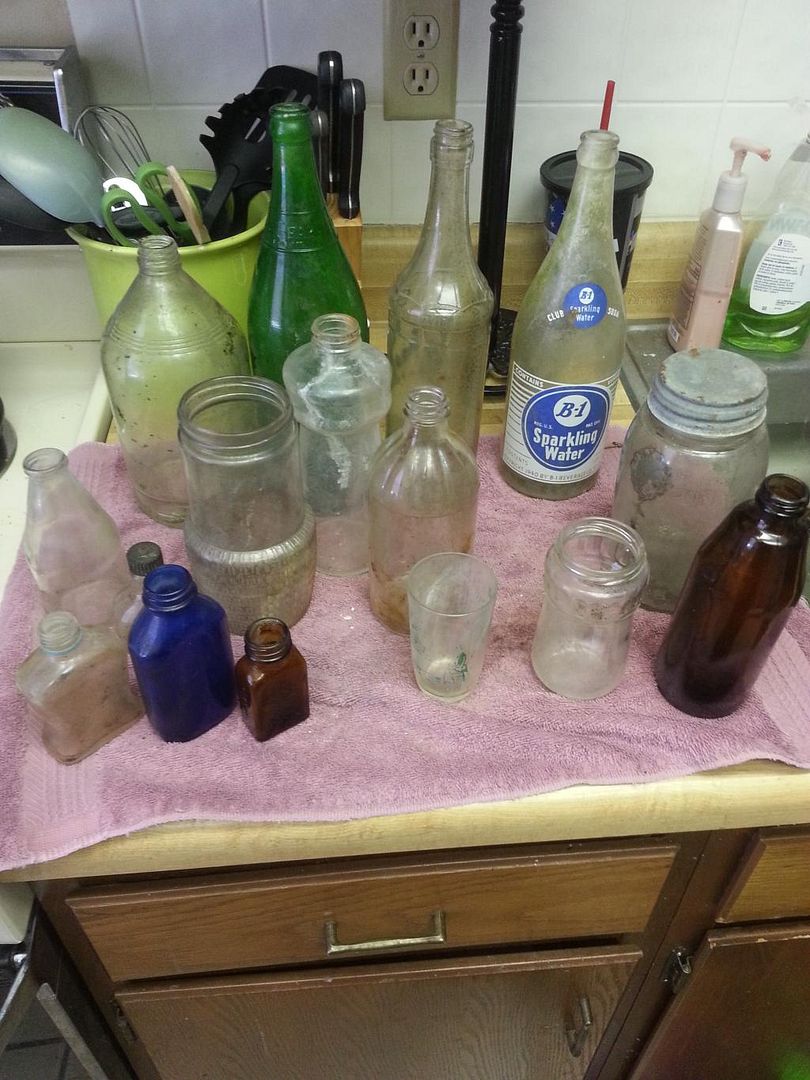Some more bottle info: The first machine made bottles started in 1903 with the invention of the "Owens" machine in 1903. This was mostly used for "Wide Mouth" jars with few exceptions. By 1906 the Owens machine was producing just about any type of glass bottle or jar. By 1908 there was wide use of other types of bottle making machines and just anything could be sold in a bottle!
1906 is a import year in bottle collecting, dating and for the American consumer. The Pure Food and Drug Act of 1906 was passed by Congress (Yea those guys). Because of this act on 1 January 1907 and for the first time labeling was required on all food and medicines. This required markings & labeling on glass bottles and jars (boxes too!) on any food, alcohol or medicine. The makers of these consumer goods now had to disclose of what were the ingredients in their bottles of "Cure All's". In fact the word "Cure" vanished from most labeling after 1907. This was also the birth of Patented medicines and the start of disclosure of harmful substance for consumer protection. Before that anything and everything was sold and consumed by all for better or worse (mostly the later).
Starting in 1907 bottles had labels with defined contents (lots of mislabeling and fraud too). List of ingredients on bottles of food and medicine now included some of the following substances: Alcohol, Morphine, Opium, Cocaine, Heroine, Alpha or Beta Euciane, Chloroform, Cannabis Indica, Chloral Hydrate and Acetanilide. Both Bayer & Eli Lilly corporation sold "Heroin Hydro-chloride" as cold medicines, no harm and no problem the ingredients were now on the label and perfectly legal! Both now highly sought after by bottle collectors and valuable. Lots of harm came in a bottle of medicine or your favorite beverage, with this act bottle collectors have a way of dating old bottles and we now have the FDA.
1914 the wise congressmen (no laddies just good old boys then) required volume quantities on bottles. So if your bottle has pint or qt., or maybe gal. for a gallon. You have a bottle made after 1914, there was few standards for abbreviations, nor industry uniformity and molds were expensive to make and they would wear out so bottle embossing was kept to a minimum. Also remember the government was mandating these requirements. Didn't make companies want to comply then, just like today.
The end of Prohibition in late 1933 became another means of dating some bottles. As a way of discouraging bootleggers, starting on 1 January 1935 congress required every bottle of liquor (not beer or wine) to have the following label: Federal Law Forbids Sale or Reuse of this Bottle. So if you have bottle with this statement, you have a bottle that was made after 1937, that may had your favorite rum or whiskey in it.
There are many ways to date bottles, usually requiring more than one type of identification and being in the know about history, business and passage of laws being very helpful also. I probably have close to a dozen books on this subject and still not nothing close to calling myself a bottle expert. I know I like my beer from a bottle and if that beer bottle is thick glass, more than likely was made before 1941. Then Peal Harbor happened and beer bottle needed to be thinner!
Here is a good bottle link.
Dating Page







 Register To Reply
Register To Reply










 .
.





Bookmarks